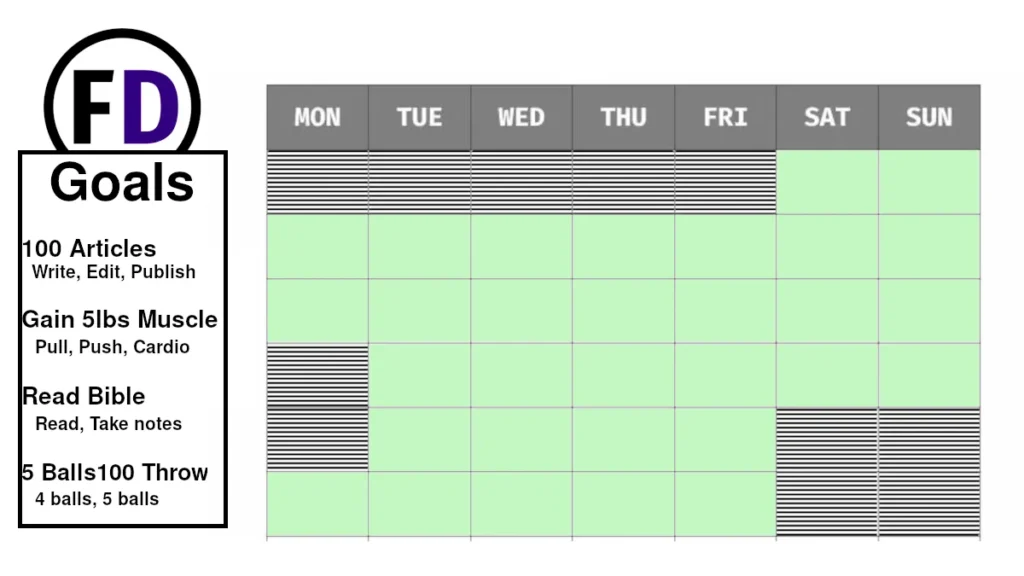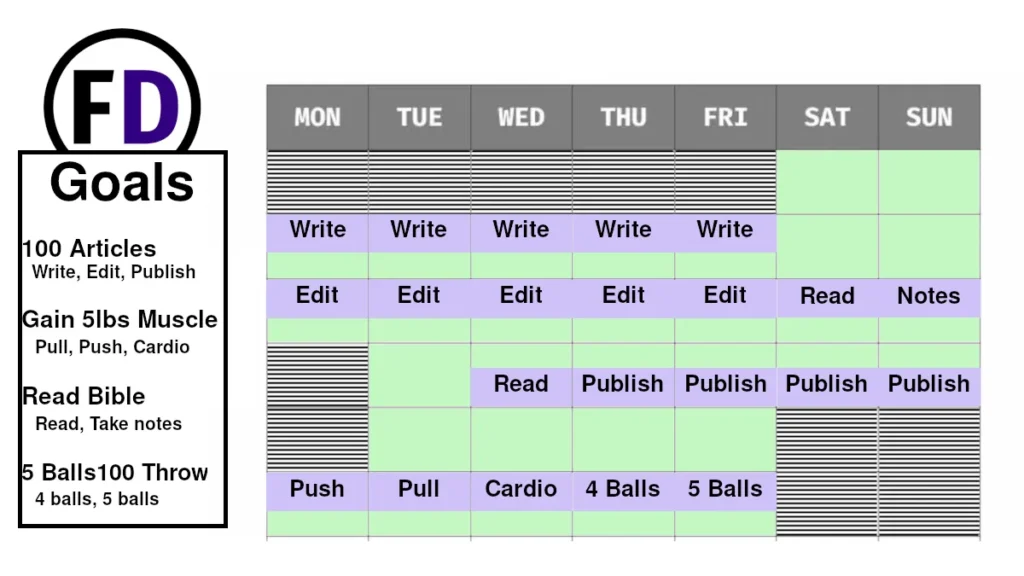Here at Face Dragons, we’re all about finding tough things to do, setting them up, and knocking them down. Of course, the most demanding challenges always offer the biggest rewards. But sometimes, life can get in the way of personal progress; holding the world back and giving yourself the space to work on your goals is the answer. A monk mode plan is what you need.
What Is Monk Mode?
Monk mode is an intense period of personal development. It usually is characterized by removing all unnecessary activities, distractions, and socializing. As a result, the ‘monk’ is left alone and distraction-free to fully focus on the goals they have set.
Monk mode usually starts with a goal; this is the primary reason you decide to do monk mode and the main focus each day. All other activities should help achieve your goal or help your productivity or mindset. For example, working out each day might not help you achieve your goal, but it will give you the energy and focus to fuel your deep work sessions.
Then a brief period of reflection should follow to figure out which parts of your life you can temporarily suspend. This usually means telling family and friends that you will be unavailable or less available for the period you do monk mode, removing items such as video game consoles, setting restrictions, or deleting apps on your phone. Essentially emptying your life so there’s nothing else to do but work on your goal.
Finally, the last thing you should do is create a plan. See below.
What Should You Do During Monk Mode?
Most people know what they want to focus on during their monk mode; it’s the thing they always want to accomplish but never seem to have the time to start because life gets in the way. But if you’re unsure how to spend your monk mode, here is some advice.
Work on Your Income
Often, monk mode appeals most to young men who haven’t matured in their lives or careers. If this is you, you must get your money right before you start thinking about anything else.
You can work on your income in different ways, depending on your current situation and your goals. There are, generally speaking, three types of income streams.
- Job
- Business
- Side Hustle
Working on your income could mean working on any of these three areas. For example, if you have a job, that might mean spending your monk mode developing new skills so you can apply for a promotion or a better role. But it could also mean working on a side hustle as a backup plan or a second income stream.
If you don’t have a job and have no plans to find one, you must be working on building your own business. If it’s not producing enough money to cover the lifestyle you want, then you shouldn’t work on anything else till it does.
If you’re still not sure what to concentrate on, check out this list of monk mode ideas.
Make a Monk Mode Plan: Schedule Examples
If you’re reading this article, this is what you’re here for. You’re starting monk mode or thinking about it and want an idea of how to set up a plan and schedule your time.
Step 1: How Much Time Do You Have?

The first thing to do is figure out exactly how much time you have available that you can set aside for monk mode. It’s nice to think that you can leave your ordinary life behind and dedicate 100% of your time, but for most, that’s impossible. We have children, work duties, and other responsibilities that we can’t ignore.
Whatever your situation, draw out a rough timetable on paper and fill in the timeslots already occupied. What’s left is the time you’ll use for monk mode.
One way to squeeze extra time out of your regular schedule is to wake up earlier; you can get things done before anyone else is awake. However, avoid staying up later unless you’re a night owl personality type and can stay productive in the evening. Unfortunately, most people can’t, and late-night work sessions tend to be inefficient.
Step 2: List Your Goals and Activities

Next is to figure out your goals and activities. Neuroscientists will tell you that goal setting affects your brain chemistry and creates behavior change – just from setting the goals.
Goals are the finish lines you want to cross, and activities are how to get you there. For example, “self-publish my book” is a goal, but “writing” or “editing” are activities.
Make your goals as specific as possible; goals like “finish the book” are slightly ambiguous. Does that finish writing it? Or finish writing and editing it and sending it to publishers? Or does it mean selling your first copy (which includes marketing it and getting the artwork etc.)?
Limit yourself to five goals. Any more, and your focus will be too scattered to make any real progress. For example, if you want to build an online consultancy business, a good goal may be “Get my first client.” Activities that support this could be making a website, creating course content, building a social media following, etc.
One of your goals should be the priority, and the others should be there to support or facilitate the first. When you have a tough day or when something unexpected happens to derail you, the non-priority activities can be ignored. But you always work on your primary goal every day.
- Write 100 Articles (primary goal): writing, editing, publishing
- Gain 5lbs Muscle: pull, push, cardio
- Read the whole Bible, read, take Bible notes
- Juggle five balls for 100 throws, four ball patterns, and five balls
When I started Face Dragons, these were the goals I set for myself and the activities I used to achieve them.
Step 3: Start Easy, at 50% of Your Max

It’s tempting at the start when you’re super motivated to just go at it full steam ahead, but this is a recipe for burnout. Unless you’re used to working long hours, your steam won’t last more than a few days before you find yourself unable to continue. Then you may find that you need a whole week off to recover. Trust me; this has happened to me multiple times.
This is the best way I’ve found to increase your workload consistently without facing burnout.
Start on day one doing just 50%of what you know you can. For me, that was simple, I was used to writing 2000 words per day, so I just started writing 1000 instead. If you don’t know how much work you can do, you’ll just have to estimate; just give yourself some easy days that first week.
This goes not only for your main activities but also for the supporting ones. For example, don’t start with a brutal leg workout on day one of your monk mode because you’ll set yourself up for failure.
Just as a weightlifter who wants to set a new PR will slowly work up to his max weight over several weeks, so should you.
Step 4: Add 20% Each Week Until You Max Out
Look back at your first week’s schedule, and when you plan out this week, add about 20% more work to it. That might mean more time spent doing the activities or 20% more output, don’t get too bogged down in the specifics; just make sure you’re doing more than last week without overloading yourself.
Using the schedule above as an example:
- Week One: 5 hours per day
- Week Two: 6 Hours per day
- Week Three: 7 hours per day
- Etc.
Continue adding 20% to your workload each week until you reach the point where you feel you’re at the limit of what you can do. When you find that limit, back off to the amount you did the week before and stay there. This is your most productive workload. You should be able to sustain it over a long period without burning out.
Assuming you are able to maintain 8 hours per day after week four, 12 weeks of monk mode will net you 630 hours of work! Imagine the progress you could make in any aspect of your life with that much dedicated time!






